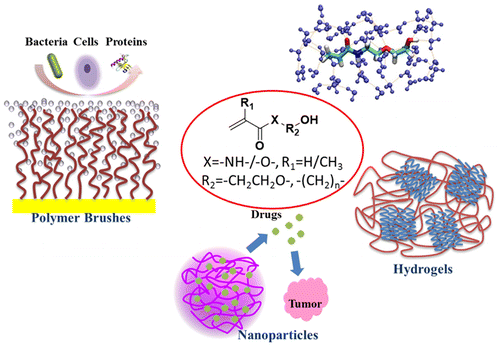ABSTRACT: Design and synthesis of highly bioinert and biocompatible antifouling materials are crucial for a broad range of biomedical and engineering applications. Among antifouling materials, polyacrylamides and polyacrylates have proved so promising because of cheap raw materials, ease of synthesis and applicability, and abundant functional groups. The strong surface hydration and the high surface packing density of polyacrylamides and polyacrylates are considered to be the key contributors to their antifouling property. In this article, we review our studies on the design and synthesis of a series of polyacrylamides and polyacrylates with different molecular structures. These polymers can be fabricated into different architectural forms (brushes, nanoparticles, nanogels, and hydrogels), all of which are highly resistant to the attachment of proteins, cells, and bacteria. We find that small structural changes in the polymers can lead to large enhancement in surface hydration and antifouling performance, both showing a positive correlation. This reveals a general design rule for effective antifouling materials. Furthermore, polyacrylamides and polyacrylates are readily functionalized with other bioactive compounds to achieve different new multifunctionalities.
